Info
Subfamily: Panicoideae
Genus etymology: Bothriochloa = "pitted grass" [Greek] refering to the pits on the lower glume in most species
Species etymology: macra = "thin" [Latin] refering to the width of the leaves
Photosynthetic type: C4 (warm season)
Nativity: naturalized - accidental
First recorded in Hawaiʻi: 1936
Map
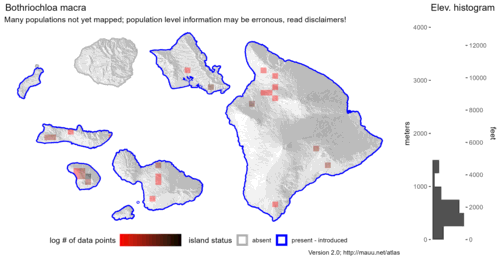

Inflorescence
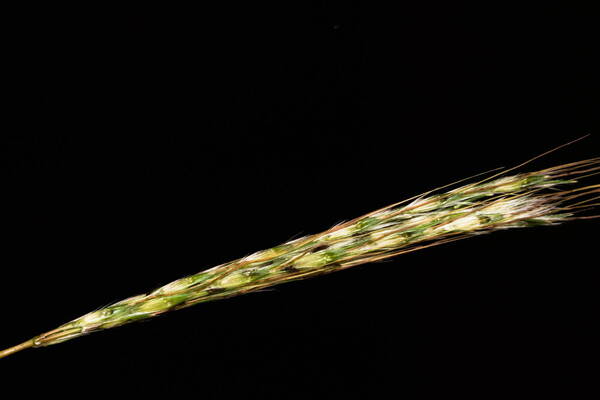
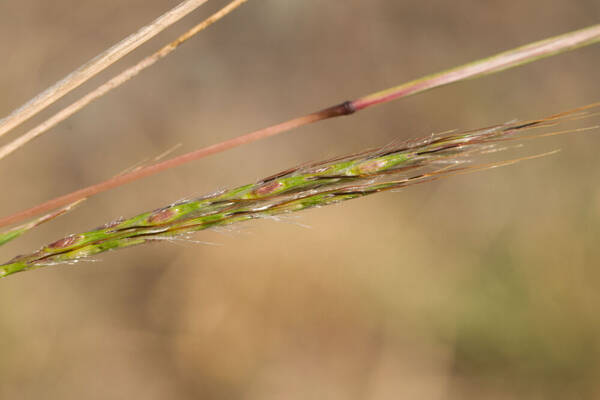
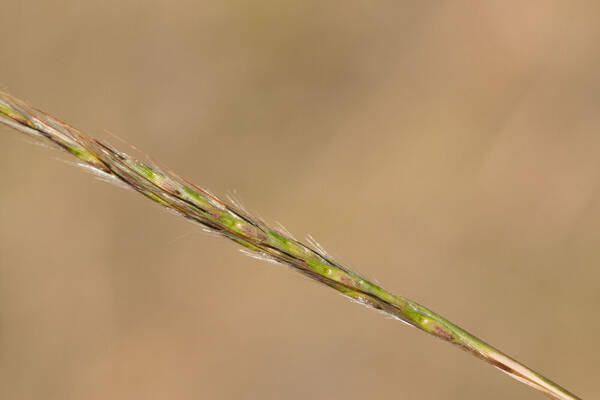
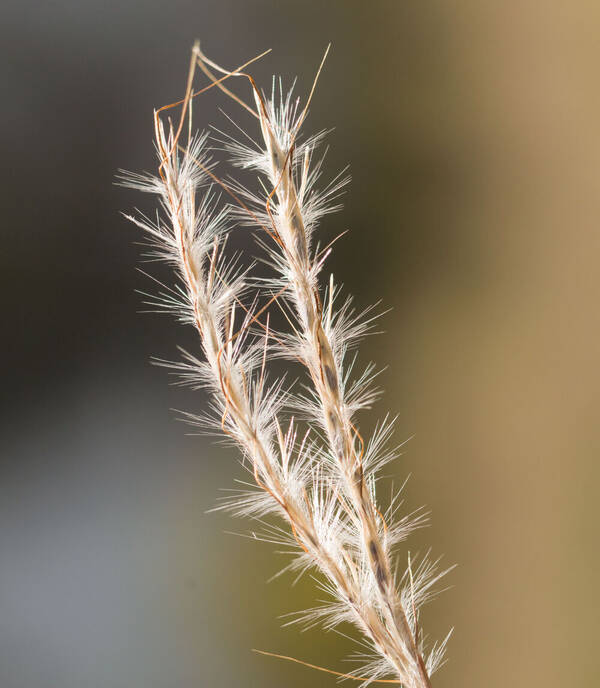
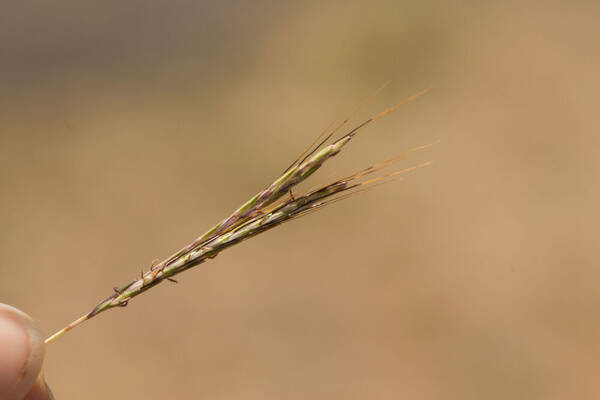
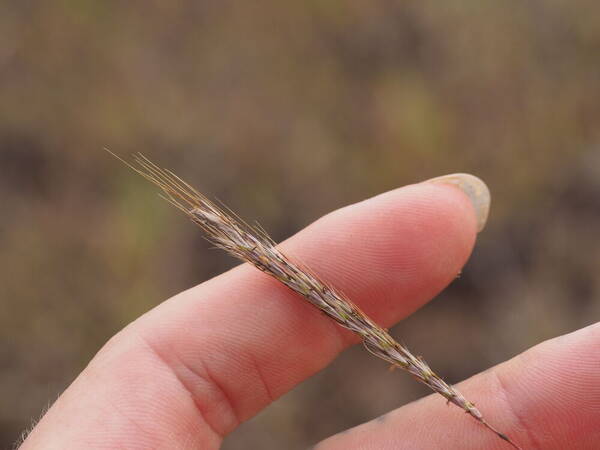
Habit
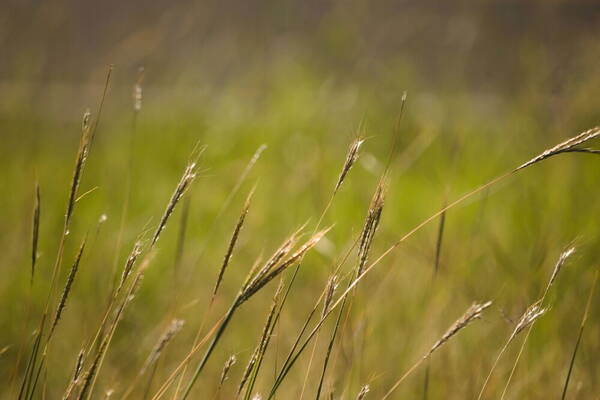
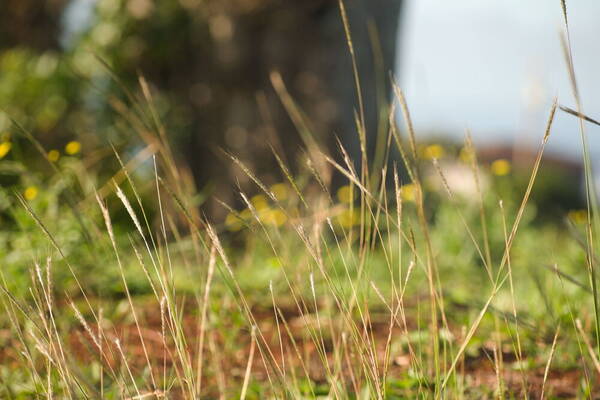
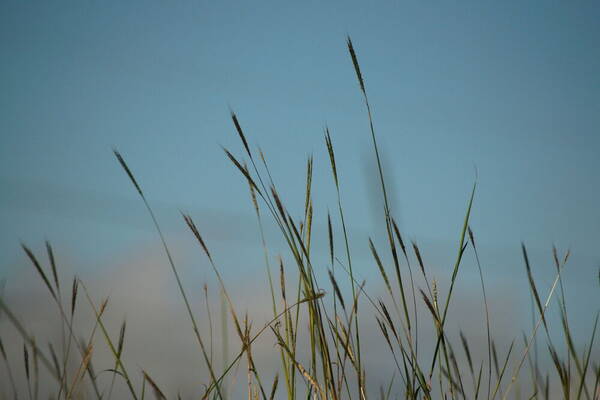
Spikelets
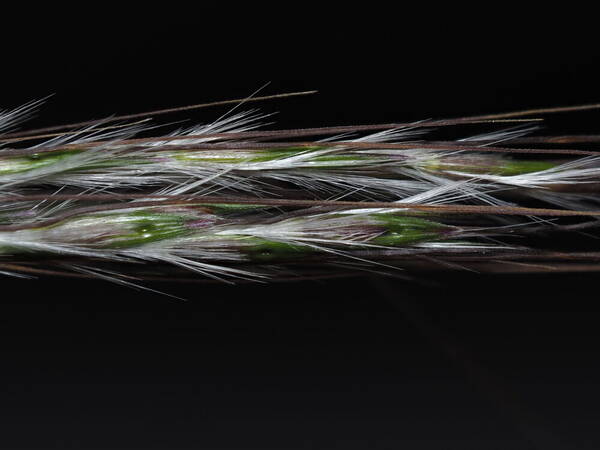
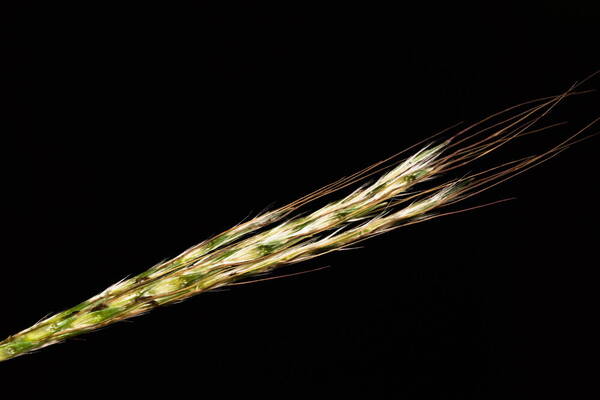
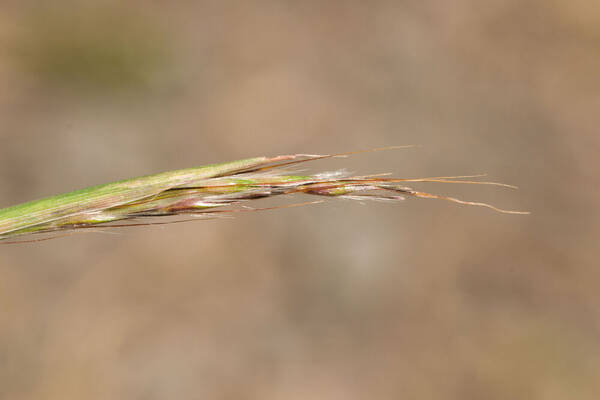
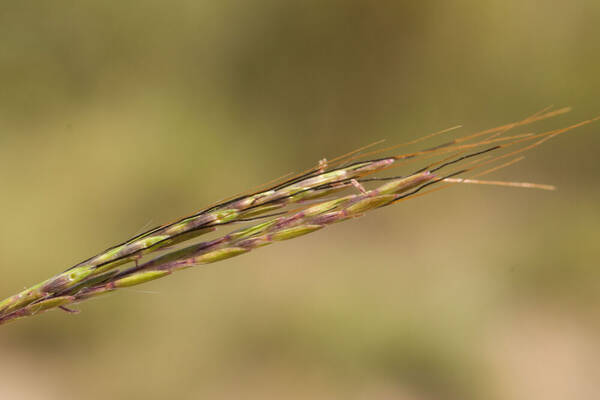
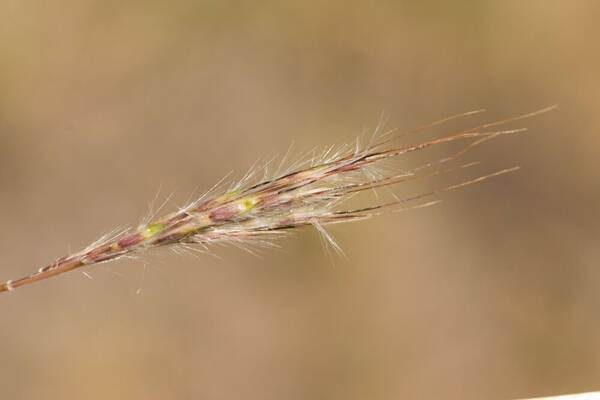
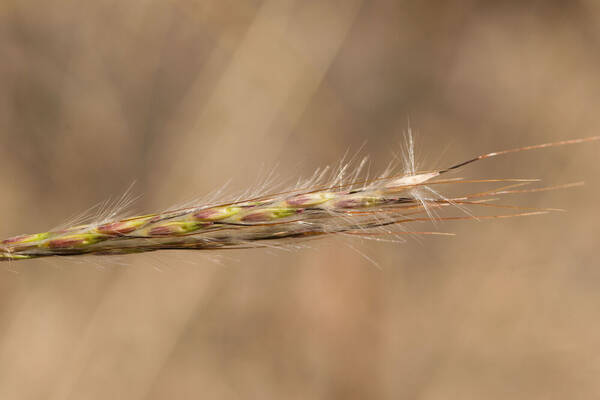
Node
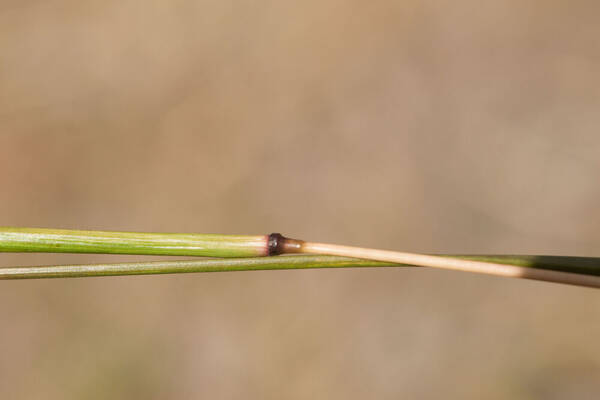
Description
Loosely to densely tufted, green or brownish, 30–100 cm high; innovations extravaginal or mixed. Culms geniculately ascending, glabrous, smooth, shining, finely striate, 2–8 (usually 3–7)-noded, branched from many of the nodes with erect branches, the internodes (uppermost excepted) with one side furrowed. Leaf-sheaths soon gaping, keeled, striate, smooth, glabrous or the nodes sometimes puberulent or pubescent, shorter than the internodes except for the lowermost; ligules membranous, truncate, 1.5–2.5 mm. long, minutely and sparsely ciliolate at apex; blades at length more or less flat or revolute, up to 30 cm. long, about 2.5–5.5 mm. wide, margins scaberulous, asperulous on the upper surface, smooth beneath, both sides (particularly at the auricles) sparsely hairy with long tubercle-based hairs, primary nerves 9–11, narrowly keeled beneath. Inflorescence of 3–6 subdigitate racemes; common axis terete, somewhat bearded at the nodes otherwise glabrous, 0.7–2 cm. long; peduncles solitary or opposite, erect, rigid, terete and glabrous or the upper ones similar to the joints of the racemes, 4–7 or up to 9 mm. long. Racemes erect, appressed or somewhat flabellate, 5–10 cm. long, white-villous; joints and pedicels, 4–4.5 mm. long, the hyaline middle line sometimes becoming opaque and disappearing, the margins ciliate with hairs up to 4.5 mm. long. Sessile spikelet lanceolate-linear, narrowed upwards from about the middle to the lower third, narrowly rounded. at the tip, 5–7 mm. long, green or pallid, rarely purplish; callus about ¾ mm. long, densely bearded with hairs up to 1 mm. long. Glumes thinly coriaceous; upper narrowly rounded at the tip, with 5–7 intracarinal nerves, loosely hairy in the lower ⅓ or rarely glabrous, the keels spinulose-scabrous above the middle, the back above the middle punctate or smooth, sometimes with a more or less circular small pit; upper glume slightly smaller, spinulose-scabrous on the keel, otherwise smooth. Lower lemma lanceolate-oblong or ovate-lanceolate, jagged at the apex, 4–5 mm. long, about as long as the glumes. Upper lemma stipe-like, 2.5–2.75 mm. long; awn with stipe 20– 23 mm. long, the brown scabrous column about as long as the scaberulous fulvous bristle, palea absent. Stamens 3; anthers 1.35–1.75 mm. long. Grain 3–3.25 mm. long, about 1 mm. wide. pedicelled spikelet neuter, lanceolate acute, 4.5–6 mm. long; lower glume scaberulous with the keels scabrous in the upper part and with 11 intracarinal nerves; upper glume much shorter, 3-nerved, ciliate; remainder absent.
(Description source: Blake, S.T. 1944. Monographic studies on the Australian Andropogoneae, Part 1. University of Queensland Department of Biology Paper 2(3): 1–62. )